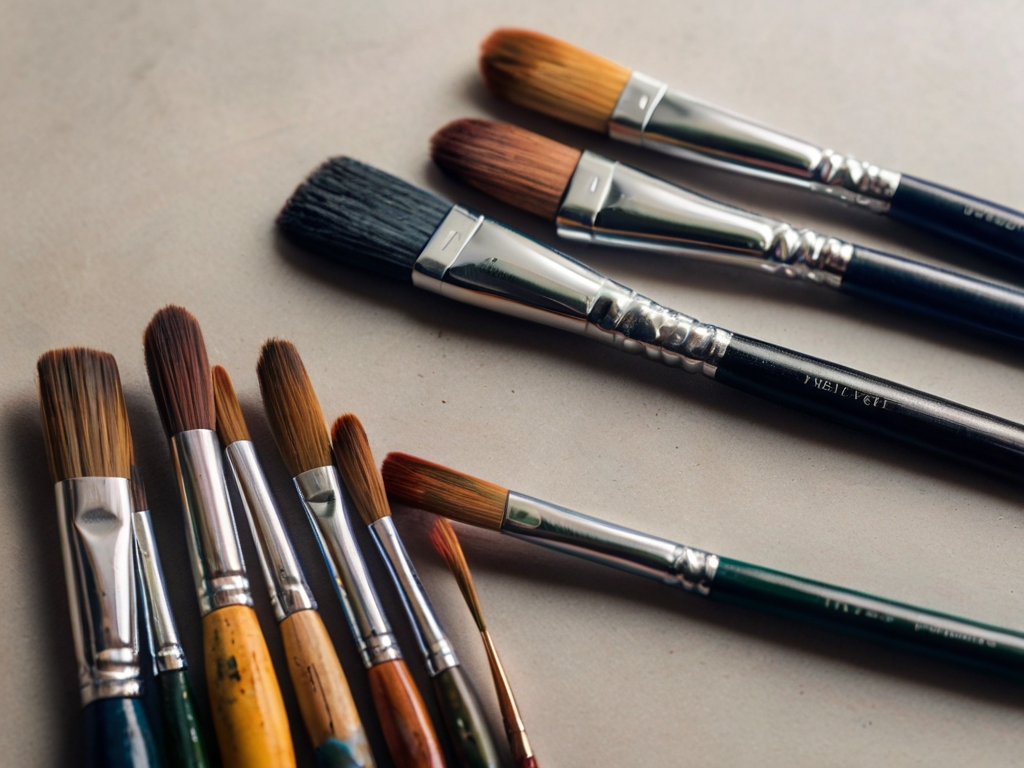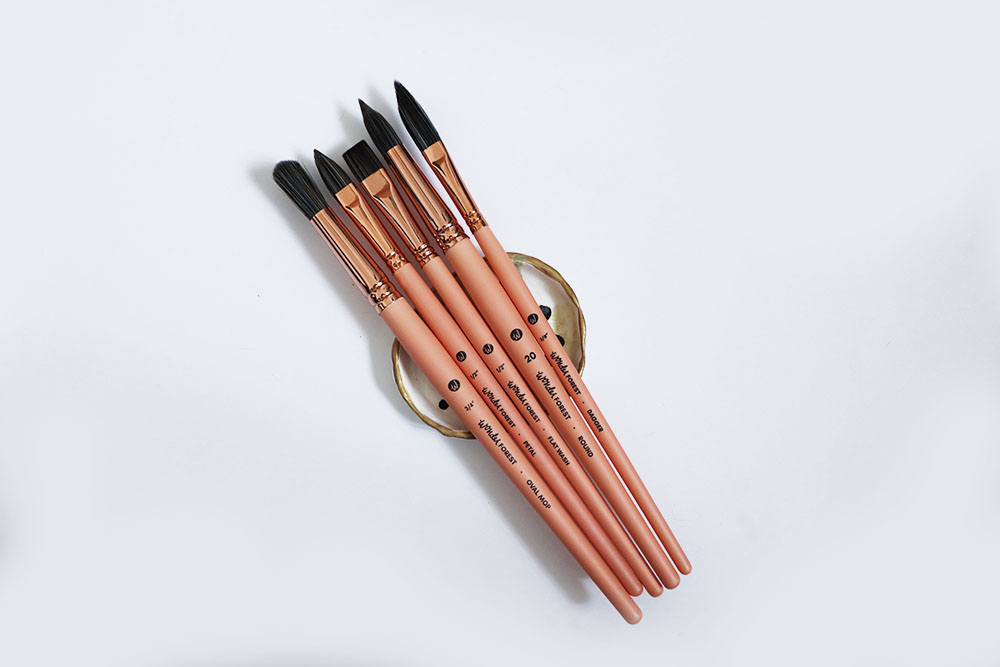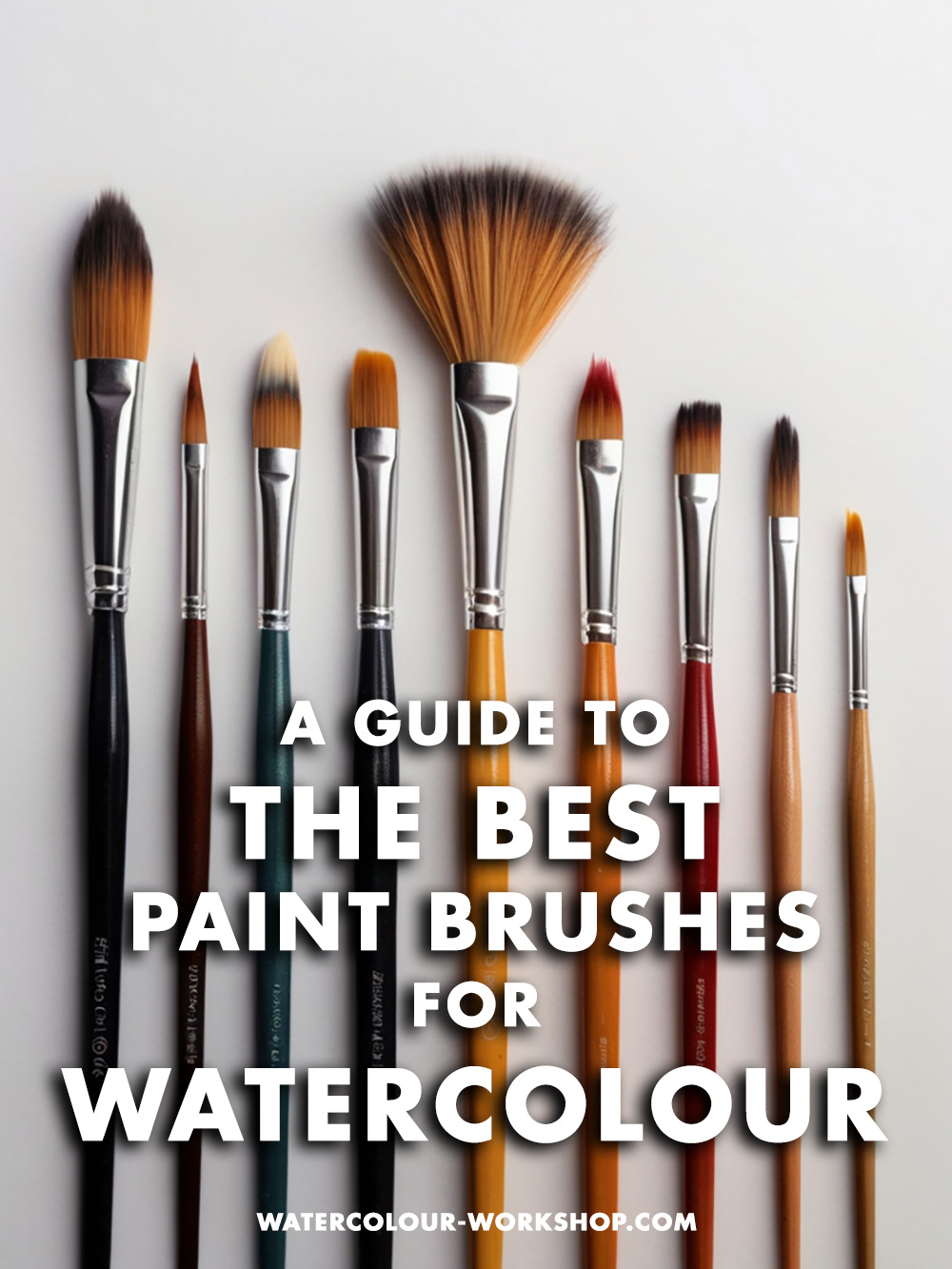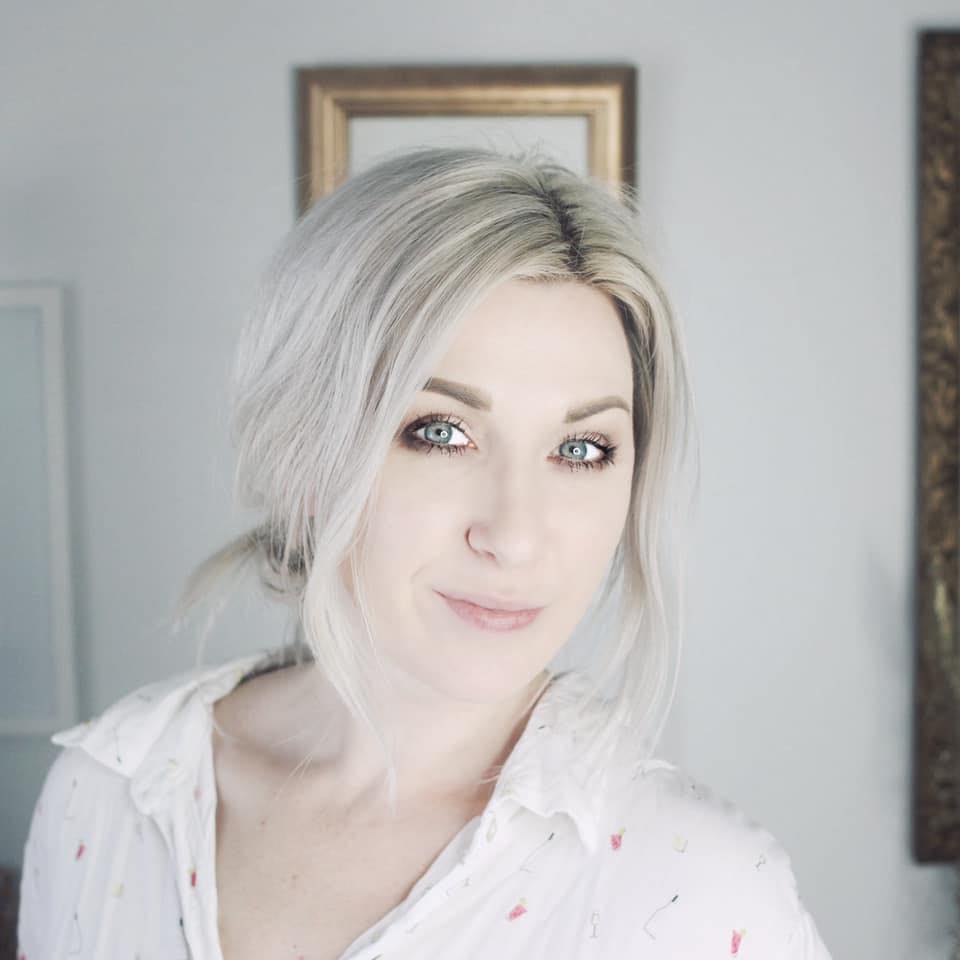If you’re getting started with watercolour painting, one thought may have crossed your mind… “What are the best paint brushes for watercolour?”.
While it might seem easiest to pick and choose the cheapest brush, there are a few things you should know before you start painting that could enhance your overall experience and really make your paintings come to life!
Brush Basics: Watercolour vs. Oil/Acrylic
Watercolor brushes and those designed for oil or acrylic paints couldn’t be more different, trust me. With oil and acrylic painting, brushes must wrestle with much heavier pigments, so they generally contain thick, tough bristles. They’re made to push around the thicker, more resistant mediums.
On the flip side, watercolor painting calls for a dance of lightness and delicacy. Here, the soft bristles of watercolor brushes truly make your art. They glide over the paper, effortlessly dispersing the pigment and water blend. The way these brushes hold a generous amount of water without drying mid-stroke is nothing short of artistry. It’s why choosing brushes with soft bristles is crucial for anyone looking to master the details of watercolor techniques.
The Anatomy of Watercolour Brushes
Diving into the world of watercolor painting, you quickly realize the heart of your art lies in the tools you use. The anatomy of watercolor brushes plays an important role in how your masterpiece unfolds on the canvas.
The hair, whether made of fine sable or synthetic fibers, dictates how much water your brush can hold and release. This distinction between natural hair brushes and synthetic will affect the fluidity and texture of your brush strokes. Shapes of the bristles vary from pointed round brushes for fine details and sharp edges, to the broad strokes laid down by flat brushes, perfect for covering larger areas.
Size will also guide your hand. Smaller brushes, like the delicate rigger brushes, are your go-to for thin lines and intricate details, while larger mop brushes will become your best friends for washes that require a lot of water. Each component, from the hair type to shape and size, serves a unique purpose, enabling you to layer, blend, and create with greater control and precision.

Brush Hair Types: Natural vs. Synthetic
You face a critical choice that impacts your artwork significantly: opting between natural and synthetic bristle watercolour brushes. Natural hair brushes, crafted from materials like sable hair or goat hair, feature unparalleled softness and water retention. These things allow for smooth, expansive brush strokes that many watercolor artists love. On the other hand, synthetic brushes, made from materials such as golden taklon, offer a cruelty-free alternative.
Our own brand of Wonder Forest brushes are a premium blend of fine synthetic fibers that mimic natural hair, so you can have both the feel of natural bristles while saving animals in the process.

Synthetic fibers have evolved, now closely mimicking the performance of their natural counterparts. These brushes snap back to their original shape with ease, making them perfect for detailed work requiring sharp edges and fine lines. Each type, be it the luxuriously soft sable or the versatile synthetic, plays an important role in diversifying your painting repertoire.
Choosing the Right Brush Shape
Choosing the ideal brush shape will transform your watercolor projects. Flat brushes are your go-to for covering large areas swiftly or creating sharp edges.
Then, there’s the round brush, the versatile hero in your toolkit. It’s perfect for those intricate details and fine lines that add character to your painting. Imagine the point of a round brush dancing over your paper, teasing out details that bring your work to life.
Lastly, the cat’s tongue brush (also known as a petal brush) combines the features of both round and flat brushes, making it a unique choice. Its shape allows for a myriad of strokes, from broad washes to thin lines, offering you flexibility in a single tool. Think of it as your secret weapon for adding depth and texture to your art.
Each brush shape opens up new possibilities, inviting you to explore and express your creativity on the watery canvas.
Understanding Brush Sizes
So, you’ve finally decided to dive into the world of watercolor painting. Immediately, you’re faced with the task of choosing your tools. Brush size will greatly impact your work. Sizes are numbered, starting at 0 for the most delicate lines and moving upwards to 24 or beyond for broad strokes. The size of the brush you choose can either elevate your artwork or leave you struggling to capture the fine details and sharp edges you envision.
However, it’s crucial to understand that sizes aren’t universal across all brands. A size 6 from Winsor & Newton might not hold as much paint or water as a size 6 from Da Vinci. This variability means you’ll need to experiment a bit or do a great deal of research to find the perfect match for your painting style.
Whether you’re aiming for thin lines with a rigger brush or covering large areas with a mop brush, selecting a brush size that aligns with your artistic vision is essential. Remember, in the dynamic world of watercolor painting, your brush is as much a choice as it is a companion.
Popular Brands for Watercolor Brushes
Finding the best paint brushes for your watercolor endeavors has always been a critical part of the journey. Winsor & Newton has earned a stellar reputation among professional artists for its high-quality brushes. These fine tools, designed for watercolor painting, have been a preferred choice due to their exceptional ability to hold much water and maintain a sharp point for detailed work.
Another brand that stands out is Princeton Neptune. Known for its synthetic alternative to natural hair brushes, it caters to a wide variety of artists’ needs. The brushes from this brand have been praised for their ease of use and ability to mimic the feel of natural sable hair without the extra cost or ethical concerns.
Both these brands have solidified their spots in the art world by consistently delivering products that offer great control, sharp edges, and the versatility needed for watercolor artists to express their creativity fully.
Caring for Your Watercolor Brushes
Caring for your beloved watercolor brushes ensures they’ll last a long time, saving you the extra cost of frequent replacements. Good care starts with washing them gently but thoroughly in cool water after each use. This prevents paint from drying in the bristles, which can lead to damage over time. Never use hot water as it could affect the brush’s glue and cause shedding.
Drying your brushes properly is another crucial step. Reshape the brush head with your fingers and lay them flat to air dry. This maintains their original shape, ensuring sharp edges for detailed work in future projects.
For storage, keep them in an upright position if they’re completely dry to avoid warping the bristles. Always remember, whether it’s natural hair brushes or synthetic brushes, every brush type benefits from tender loving care. By investing a bit of time after each painting session, you grant yourself greater control and ease of use for all your creative endeavors ahead.
The Price Point: Budgeting for Quality
The hunt for the best watercolor brushes takes us down a path where price becomes a crucial crossroads. I’ve seen brushes with price tags that make your wallet weep, sitting right next to seemingly identical ones at a fraction of the cost. This contrast isn’t just for show. It reflects differences in materials, from high-quality kolinsky sable hair to more affordable synthetic alternatives. Brands like Winsor & Newton or Princeton Neptune come with a reputation for excellence, but also a higher price point.
Finding a balance between splurging and saving involves a dance with personal preferences and professional needs. For beginners, investing in a single, good quality brush of a versatile size could be the best option. This approach allows for experimentation without overwhelming expenses.
As your skills flourish and demand for variety in stroke and texture grows, slowly adding specific brushes like a fine point for detailed work or a broader mop brush for larger areas becomes justified. Always remember, a great choice in brush can elevate your watercolor art, making every penny spent a worthwhile investment.
Personal Preferences in Brush Selection
You’ve scoured the markets and online shops, eyeing the best paint brushes for your watercolor endeavors. Understand this: the journey to mastering watercolor painting relies significantly on brush selection, yet no rule book dictates your choice. It swings broadly on the pendulum of personal preference.
Your painting style might gravitate towards broad, wash-filled landscapes necessitating mop brushes or perhaps detailed botanical illustrations where a fine point or rigger brushes promise precision. If the thought of creating thin lines and sharp edges thrills you, a Kolinsky sable (or premium synthetic alternative) with its exceptional point and spring might become your trusted ally. Conversely, for those expansive areas, a flat brush or a large round brush can hold a lot of water, easing the flow of paint across the paper.
Reflect upon the feel of a brush in your hand; it’s as crucial as the strokes it produces. Some artists prefer short handles for their control and precision, while others find the balance of a longer handle more comfortable. This journey you’re embarking on, selecting from a variety of brushes – be they natural hair brushes for their capacity and smoothness or synthetic brushes as a durable synthetic alternative, complements the creative process.
The essence of your artistry won’t just be seen but felt through the choices you make today. In watercolor painting, sometimes, it’s about finding that harmony between your technique, comfort, and the unique flair of your brush.
When to Replace Your Brushes
You’ve worked hard on your watercolor paintings, blending delicate strokes and mastering the dance of colours. But even the best watercolor brushes, from those crafted with sable hair for fine details to the versatile synthetic brushes designed for broader strokes, start showing signs of wear. If you notice your brush no longer keeps its sharp point or fine point, making it harder to execute the detailed work or fine lines you love, it’s a clear sign.
Keep an eye on the bristles; fraying or losing their original shape means your brush might no longer perform its best for those intricate brush strokes or hold as much water as it once could. Not to mention, if you’ve been reaching for that favourite brush and notice it’s losing its finesse, the time for a new one has come. Recognizing these signs early can prevent your artwork from suffering and ensure you always have the best tool for your watercolor art.
Brushing Up on Mastery
Through this journey, we’ve explored the many paths that lead us to the perfect tool for our watercolour art. Brushes, as we’ve discovered, are not just tools; they are extensions of our creative selves, allowing for the expression of our inner visions onto the canvas of reality.
Da Vinci once said, “the brush should dance”. The kolinsky sable, the synthetic alternative, and every hair type in between, all have their parts to play in our artistic symphony. We learned that the choice between the different shapes, sizes, and hair types – be it the fine detail enabled by a sharp point rigger or the broad washes facilitated by mop brushes – directly impacts the strokes of genius we leave behind.
Many high-quality brands offer us an array of choices, each with its strengths. The larger brushes, capable of holding a lot of water, enable us to tackle larger areas, while smaller brushes, with their fine points, assist in painting those tiny, intricate details that bring a watercolor piece to life. The decision between natural and synthetic bristles, between a flat brush for sharp edges or a round brush for detailed work, even between the lengths of the handles, influences our painting style.
But, the journey does not end here. Maintenance of these tools is so important; good care ensures longevity and sustained quality of work. Recognizing when it’s time for a replacement – when our trusted brushes no longer hold their original shape or their bristles fray – is as critical as the initial selection. As we move forward, let us carry these insights close to our hearts. In applying this knowledge with care and consideration, we can continue to elevate our watercolour painting, creating beauty and expression that were until now unimagined.
Pin this!


Besides being a wife and mama, I’m an entrepreneur, artist and author of the Watercolor With Me book series. I’m from Ontario, Canada and founder of the brand Wonder Forest. I’m here to help you on your watercolour journey!
